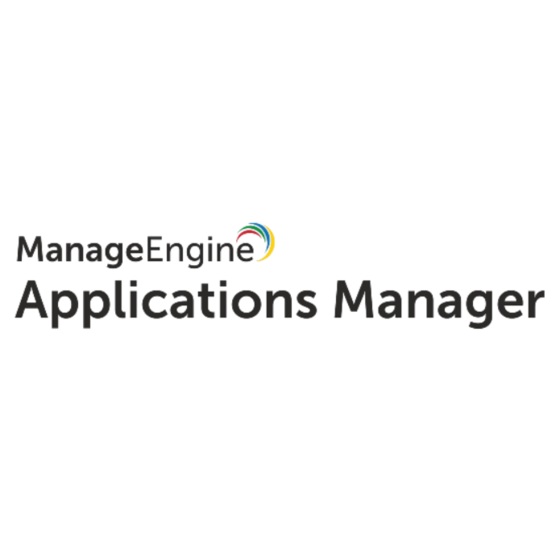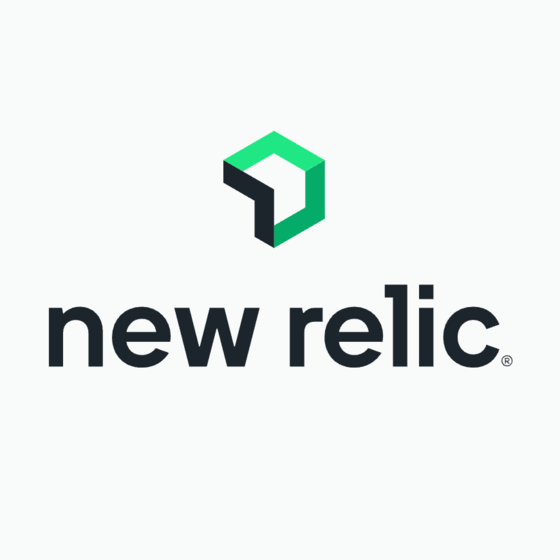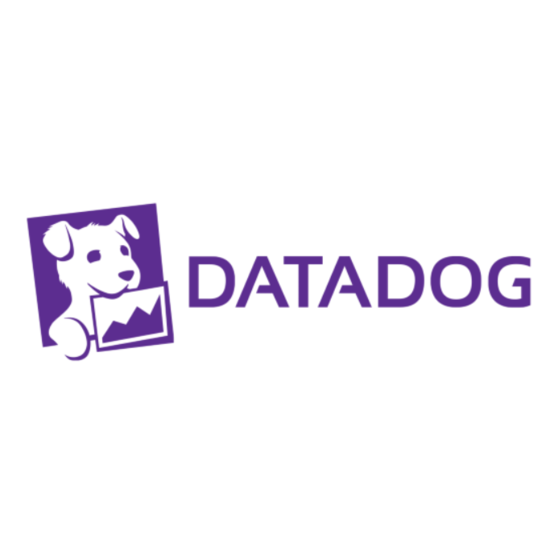Best Dynatrace Alternatives Shortlist
Here’s my shortlist of the best Dynatrace alternatives:
Our one-on-one guidance will help you find the perfect fit.
As a seasoned professional navigating APIs, microservices, and a host of full-stack technologies, I recognize the vital role of effective performance monitoring. Over the years, I've experienced first-hand the merits of using comprehensive AIOps platforms, such as those alternatives to Dynatrace, that offer swift troubleshooting and root cause analysis capabilities.
These Dynatrace substitutes are not just user-friendly, but also impress with their robust monitoring features. The seamless integration with popular platforms such as Slack aids in enhancing team communication during crucial situations. With extensive profiling and modular solutions at your disposal, you're equipped with a potent monitoring platform that can uplift your tech stack and overall productivity.
What Is Dynatrace?
Dynatrace is an application performance monitoring (APM) platform that helps you track, analyze, and optimize how your apps and infrastructure are running. It's used by DevOps teams, SREs, and IT leaders who need to catch issues early and improve user experience. Real-time monitoring, AI-powered alerts, and end-to-end tracing help with finding slowdowns, pinpointing root causes, and keeping systems running smoothly. Overall, Dynatrace helps your team stay ahead of performance problems before they affect users.
Why Trust Our Software Reviews
We’ve been testing and reviewing SaaS development software since 2023. As tech experts ourselves, we know how critical and difficult it is to make the right decision when selecting software. We invest in deep research to help our audience make better software purchasing decisions.
We’ve tested more than 2,000 tools for different SaaS development use cases and written over 1,000 comprehensive software reviews. Learn how we stay transparent & check out our software review methodology.
Best Dynatrace Alternatives Summary
This comparison chart summarizes pricing details for my top Dynatrace alternative selections to help you find the best one for your budget and business needs.
| Tool | Best For | Trial Info | Price | ||
|---|---|---|---|---|---|
| 1 | Best for extensive technology support | 30-day free trial + demo available | From $395/year (billed annually) | Website | |
| 2 | Best for comprehensive IT infrastructure monitoring | 30-day free trial | From $20/user/month (billed annually) | Website | |
| 3 | Best for comprehensive application performance monitoring | Free plan + demo available | Pricing upon request | Website | |
| 4 | Best for real-time business performance visibility | Free trial available | From $6/month (billed annually) | Website | |
| 5 | Best for unified cloud service tracking | 14-day free trial available | From $15/user/month | Website | |
| 6 | Best for log management and security analytics | 30-day free trial + free demo | From $15/user/month (billed annually) | Website | |
| 7 | Best for enterprise-level open-source monitoring | Free trial available | Pricing upon request | Website | |
| 8 | Best for IT operations management across networks | 30-day free trial | From $39/user/month | Website | |
| 9 | Best for real-time search and data analytics | 14-day free trial | From $16/user/month (billed annually) | Website | |
| 10 | Best for large-scale data analysis and insights | Free trial available | Pricing upon request | Website |
-

Docker
Visit WebsiteThis is an aggregated rating for this tool including ratings from Crozdesk users and ratings from other sites.4.6 -

Pulumi
Visit WebsiteThis is an aggregated rating for this tool including ratings from Crozdesk users and ratings from other sites.4.8 -

GitHub Actions
Visit Website
Best Dynatrace Alternatives Reviews
Below are my detailed summaries of the best Dynatrace alternatives that made it onto my shortlist. My reviews offer a detailed look at the key features, pros & cons, integrations, and ideal use cases of each tool to help you find the best one for you.
Best for extensive technology support
ManageEngine Applications Manager is an application performance monitoring (APM) solution that helps you oversee the health and performance of your business-critical applications and infrastructure components.
Why I Picked ManageEngine Applications Manager:
One reason I like ManageEngine Applications Manager as a Dynatrace alternative is its extensive support for over 150 technologies. This means you can monitor a wide array of applications and infrastructure components, ensuring comprehensive oversight of your IT environment. The tool's ability to provide detailed insights into various systems allows your team to maintain optimal performance across the board.
Standout Features & Integrations:
Other features include synthetic transaction monitoring, which lets you simulate user interactions to identify potential issues before they affect actual users. Additionally, real user monitoring captures the experiences of real users, providing insights into how your applications perform under various conditions. Some integrations include ADManager Plus, M365 Manager Plus, OpManager, Site24x7, Log360, EventLog Analyzer, Endpoint Central, ServiceDesk Plus, CloudDNS, CloudSpend, and Zoho Creator.
Pricing:
Pricing for ManageEngine Applications Manager is available upon request.
Pros and cons
Pros:
- The platform offers customizable dashboards
- Real-time monitoring and alerting to promptly address issues
- Comprehensive monitoring capabilities across various applications and servers
Cons:
- Can be resource-intensive on larger scales
- Initial setup can be complex, requiring careful configuration
New Product Updates from ManageEngine Applications Manager
ManageEngine Applications Manager Integrates PAM360
ManageEngine Applications Manager now supports PAM360 integration, enabling automatic password synchronization for server-monitored resources, enhancing privileged access management. For more details, refer to the ManageEngine Release Notes.
Nagios is a powerful monitoring system that enables organizations to identify and resolve IT infrastructure problems before they affect critical business processes. Given its comprehensive coverage of IT infrastructure monitoring, Nagios is particularly adept at ensuring systems, networks, and applications are operating optimally.
Pros and cons
Pros:
- Wide range of integrations
- Advanced alerting system
- Comprehensive IT infrastructure monitoring
Cons:
- No official support for the open-source version
- Advanced features require paid plan
- Might be complex for beginners
New Relic is a platform that provides an extensive range of solutions for monitoring and optimizing application performance. The software offers an impressive blend of tools, enabling users to track every aspect of their application lifecycle, justifying its position as best for comprehensive application performance monitoring.
Pros and cons
Pros:
- Features customizable dashboards for unique user experience
- Provides robust set of integrations
- Offers comprehensive application performance monitoring
Cons:
- Smaller teams might not utilize all features
- Pricing can be complex
- Higher learning curve due to broad feature set
AppDynamics offers a suite of monitoring tools designed to provide deep insights into your business performance. This platform excels at giving a real-time view of your business metrics, making it ideal for those needing immediate visibility into their performance.
Pros and cons
Pros:
- Comprehensive application and infrastructure monitoring
- Robust integrations with popular platforms
- Provides real-time business performance visibility
Cons:
- Interface may seem cluttered due to the amount of data presented
- May be complex for beginners
- Can be expensive for smaller teams
Datadog provides a comprehensive monitoring service for cloud-scale applications. It is a go-to solution for businesses that operate within a cloud environment, making it the best choice for unified cloud service tracking.
Pros and cons
Pros:
- Real-time dashboards offer immediate insights
- Extensive integration possibilities
- Comprehensive tracking for cloud services
Cons:
- Customization options can be overwhelming
- Setup can be complex for beginners
- Pricing may be high for small organizations
Sumo Logic is a cloud-based platform that excels in aggregating, analyzing, and visualizing log data to aid in IT operations, application monitoring, and security analytics. Its potent capacity for log management, coupled with advanced security analytics, makes it a standout choice for teams focusing on these areas.
Pros and cons
Pros:
- Predictive insights through machine learning
- Effective integrations with various platforms and services
- Robust log management and security analytics
Cons:
- Heavy dependency on internet connectivity due to its cloud-based nature
- The interface may be complex for some users
- High cost can be a barrier for small to medium-sized organizations
Zabbix is an enterprise-grade, open-source monitoring solution tailored for tracking, recording, alerting, and visualizing data from a diverse array of IT components. The reason it excels at enterprise-level open-source monitoring is due to its scalability, feature-rich platform, and ability to integrate with various systems and applications.
Pros and cons
Pros:
- Strong community and professional support
- Comprehensive set of features
- Excellent scalability
Cons:
- Advanced support requires additional cost
- Configuration may require a substantial amount of time
- The learning curve can be steep
SolarWinds is a well-regarded IT operations management tool that offers comprehensive monitoring and management across networks. Its robust capabilities make it ideal for IT teams that oversee expansive and complex network environments.
Pros and cons
Pros:
- Offers powerful and customizable dashboards
- Excellent integrations with multiple systems
- Comprehensive network monitoring and management features
Cons:
- Customer service can sometimes be slow to respond
- Complex configuration may require technical expertise
- Higher-end pricing might not suit smaller businesses
Elastic is an open-source search and analytics engine known for its speed and scalability. It is commonly used for log and event data analysis due to its real-time capabilities, making it an ideal choice for real-time search and data analytics.
Pros and cons
Pros:
- Broad range of integrations
- High-speed and scalability
- Real-time search and analysis
Cons:
- High learning curve for beginners
- Advanced features require paid plans
- Can be complex to set up
Splunk is a platform designed to collect and analyze high volumes of machine-generated data. It's an excellent choice for those who need in-depth insights from large data sets.
Pros and cons
Pros:
- Robust integrations with major platforms
- Powerful predictive analytics and machine learning features
- Capable of handling and analyzing large data sets
Cons:
- Customization can be complex
- Has a steeper learning curve
- Can be expensive for smaller companies
Other Dynatrace Alternatives
Here are some additional Dynatrace alternatives that didn’t make it onto my shortlist, but are still worth checking out:
- Prometheus
For robust monitoring in Kubernetes environments
- Grafana Cloud
For open-source visualization and analytics
- Sysdig
For container and Kubernetes security
- Site24x7
For diverse application environments
- Dotcom Monitor
For real-browser simulations
- Auvik
Good for comprehensive network infrastructure management
- Pingdom
Good for uptime, performance, and user experience monitoring
- LogicMonitor
Good for SaaS-based, agentless monitoring
- Honeycomb
Good for observability and debugging in production systems
- Icinga
Good for comprehensive monitoring with strong community support
- Sensu
Good for robust event filtering in monitoring workflows
- Stackify Retrace
Good for deep code-level insights for developers
- Scout APM
Good for developers wanting detailed performance insights
- Opsview
Good for businesses seeking customizable dashboards and reporting
- Wavefront by VMware
Good for scalable, high-granularity observability and analytics
- Riverbed
Good for network performance monitoring with digital experience focus
- Instana
Good for real-time performance monitoring with automatic APM
- ThousandEyes
Good for network intelligence and visualizing network paths
Other Software Reviews
Dynatrace Alternatives Selection Criteria
In my extensive experience with IT monitoring software, I have tried, tested, and researched countless tools. For this particular review, I evaluated more than 30 tools, focusing on their core functionalities, key features, and usability aspects to meet the specific needs of businesses seeking the best network monitoring solutions. Here's what mattered the most to me.
Core Functionality
- Monitoring Capabilities: The tool should provide a holistic view of a network's health, including servers, devices, and applications.
- Alerting Mechanism: Instant notifications when issues arise are essential to prevent downtime.
- Reporting: The ability to generate detailed reports for analysis and data-driven decision-making.
Key Features
- Customizable Dashboards: Dashboards should be easily customizable to display relevant metrics as per the user's preference.
- Scalability: The software should be able to accommodate growth and handle an increasing amount of work in the network infrastructure.
- Integration: The tool should integrate with other platforms or software used in the business for streamlined operations.
Usability
- User Interface: The user interface should be intuitive and not overly complicated, enabling users to quickly understand and navigate through different functionalities.
- Easy Setup: The initial setup and onboarding process should be straightforward and not require an extensive amount of time.
- Customer Support: It's crucial to have responsive and knowledgeable customer support to address any issues or queries promptly.
- Training Resources: Considering the complexity of network monitoring tools, the presence of a well-structured learning library or training resources for onboarding users is highly beneficial.
Why Look For A Dynatrace Alternative?
While Dynatrace is a good choice of application performance monitoring (APM) platform, there are a number of reasons why some users seek out alternative solutions. You might be looking for a Dynatrace alternative because…
- Pricing can get too steep for smaller teams
- Learning curve feels too high for new users
- You want simpler dashboards and reporting
- You need more flexible alerting and notification options
- You're running a hybrid setup and need broader integrations
- You prefer tools with more transparent billing
If any of these sound like you, you’ve come to the right place. My list contains several application performance monitoring (APM) platform options that are better suited for teams facing these challenges with Dynatrace and looking for alternative solutions.
Dynatrace Key Features
Here are some of the key features of Dynatrace, to help you contrast and compare what alternative solutions offer:
- Full-stack monitoring: Lets you track app performance, infrastructure, and user experience all in one place.
- Davis AI engine: Spots problems automatically and explains the root cause to save your team time.
- Real user monitoring: Shows how real users interact with your app so you can fix issues that matter.
- Application security: Flags vulnerabilities in real time while your code runs in production.
- Cloud-native support: Works well with Kubernetes, AWS, Azure, and other cloud environments.
- Smart alerting: Sends alerts only when needed so your team avoids alert fatigue.
- Custom dashboards: Lets you build views tailored to your team’s needs and metrics.
- Code-level insights: Helps you dig into performance down to individual lines of code.
- Log management: Lets you search, filter, and analyze logs to troubleshoot faster.
- Synthetic monitoring: Simulates user actions so you can test app performance from different locations.
Summary
In this buyer's guide, we dove deep into the realm of Dynatrace alternatives, exploring various options tailored to specific use cases. Whether you're seeking a tool for enterprise-level open-source monitoring, log management and security analytics, or container and Kubernetes security, you have many robust options to consider.
Here are three key takeaways from this guide:
- Assess Your Needs: Different tools are designed with various use cases in mind. Some are good for extensive log management, others for open-source environments, and others still for container and Kubernetes security. Understanding your organization's unique needs will guide you toward the right tool.
- Look at the Features: Tools may have similar core functions, but the devil is in the details. The unique features of each tool, their usability, and integrations with other tools you use can make all the difference in your monitoring experience.
- Consider the Pricing: While the cost is often a significant factor, it's important to consider what you're getting for your money. A more expensive tool might provide the robust functionality or support you need, and in some cases, a cheaper or even free tool may meet your needs.
Remember, the 'best' tool depends entirely on your organization's specific requirements and circumstances. Armed with the information in this guide, you are well on your way to making an informed decision.
What do you think?
Certainly, no list can encompass every excellent Dynatrace alternative out there. There might be some great tools that I didn't cover in this guide. If you've used or heard about a tool that you believe deserves a spot on this list, please share your thoughts.
Your insights and experiences could be invaluable to others exploring their options. I look forward to hearing from you.

























